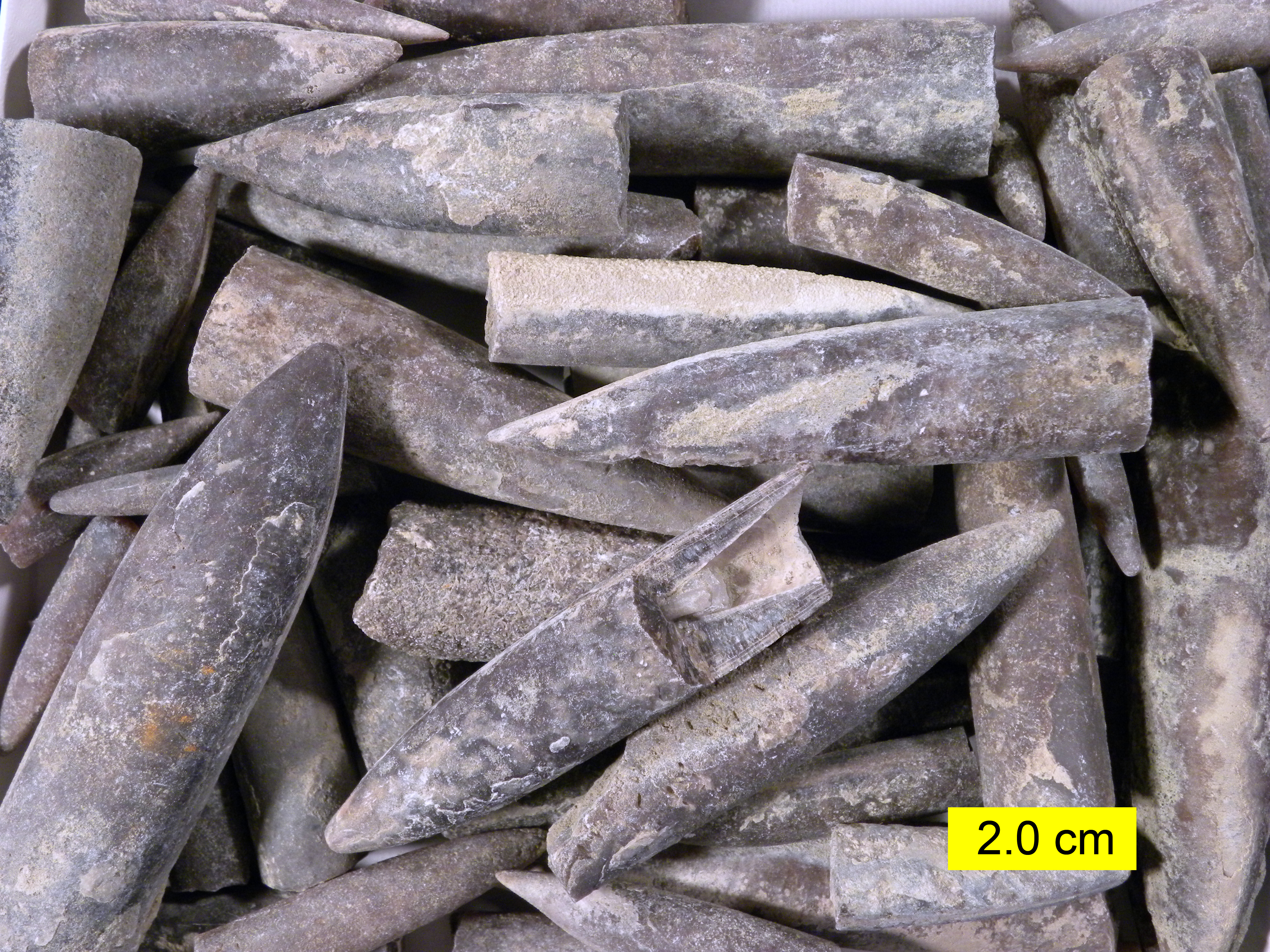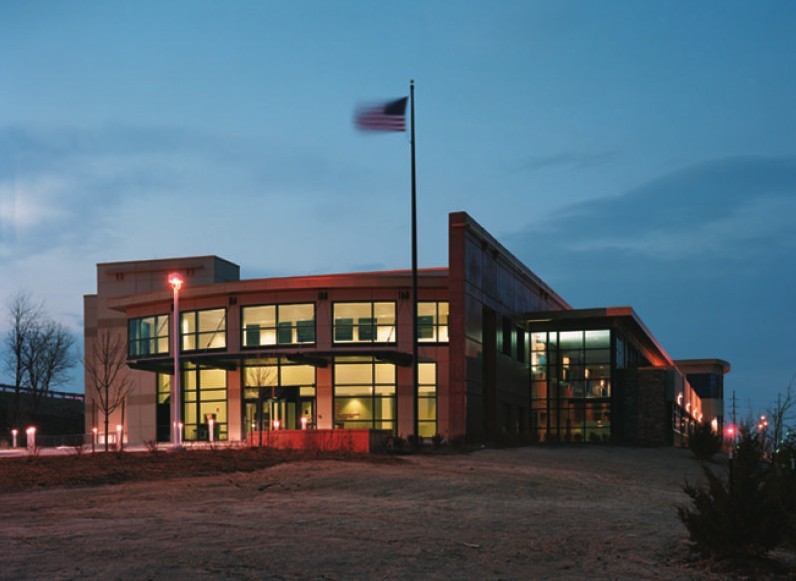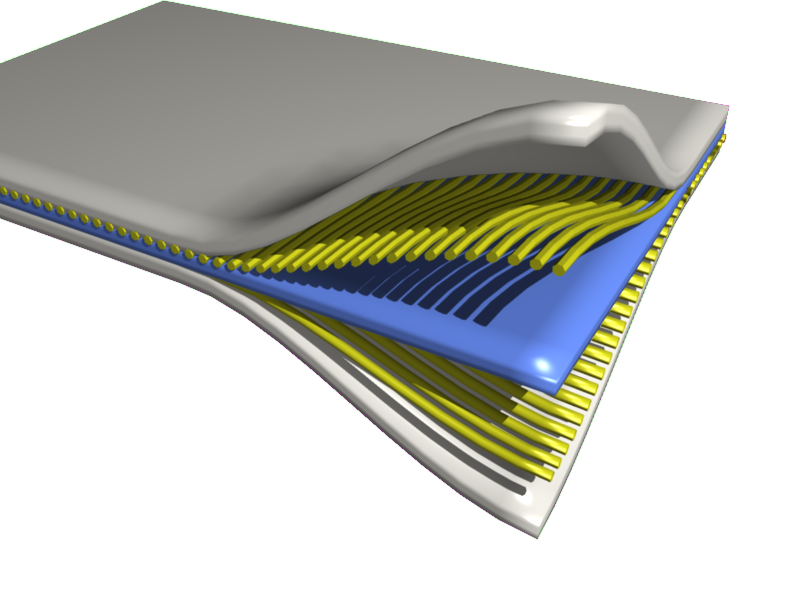|
Cement-bonded Wood Fiber
Cement-bonded wood fiber is a composite material manufactured throughout the world. It is made from wood (usually waste wood), chipped into a specially graded aggregate that is then mineralized and combined with Portland cement. Uses Cement-bonded wood fiber is used to manufacture a wide variety of products primarily for the construction industry (products like insulating concrete forms, siding materials and noise barriers). Cement bonded wood fiber materials can be classified as low density, medium density and high density. The density of the material will determine to a large extent, the various properties of the end product. Other factors determining the overall performance of a cement bonded wood fiber material are: # Wood particle type # Wood particle gradation # cement to wood ratio # Level of sugar content in the wood particle at the time of bonding Most common is low-density cement bonded wood fiber. It is known for its use in LEED-certified projects and other type ... [...More Info...] [...Related Items...] OR: [Wikipedia] [Google] [Baidu] |
Composite Material
A composite material (also called a composition material or shortened to composite, which is the common name) is a material which is produced from two or more constituent materials. These constituent materials have notably dissimilar chemical or physical properties and are merged to create a material with properties unlike the individual elements. Within the finished structure, the individual elements remain separate and distinct, distinguishing composites from mixtures and solid solutions. Typical engineered composite materials include: *Reinforced concrete and masonry *Composite wood such as plywood *Reinforced plastics, such as fibre-reinforced polymer or fiberglass *Ceramic matrix composites ( composite ceramic and metal matrices) *Metal matrix composites *and other advanced composite materials There are various reasons where new material can be favoured. Typical examples include materials which are less expensive, lighter, stronger or more durable when compared with commo ... [...More Info...] [...Related Items...] OR: [Wikipedia] [Google] [Baidu] |
Mineralization (biology)
Biomineralization, also written biomineralisation, is the process by which living organisms produce minerals, often to harden or stiffen existing tissues. Such tissues are called mineralized tissues. It is an extremely widespread phenomenon; all six taxonomic kingdoms contain members that are able to form minerals, and over 60 different minerals have been identified in organisms. Examples include silicates in algae and diatoms, carbonates in invertebrates, and calcium phosphates and carbonates in vertebrates. These minerals often form structural features such as sea shells and the bone in mammals and birds. Organisms have been producing mineralized skeletons for the past 550 million years. Calcium carbonates and calcium phosphates are usually crystalline, but silica organisms (sponges, diatoms...) are always non crystalline minerals. Other examples include copper, iron and gold deposits involving bacteria. Biologically formed minerals often have special uses such as magneti ... [...More Info...] [...Related Items...] OR: [Wikipedia] [Google] [Baidu] |
Portland Cement
Portland cement is the most common type of cement in general use around the world as a basic ingredient of concrete, mortar, stucco, and non-specialty grout. It was developed from other types of hydraulic lime in England in the early 19th century by Joseph Aspdin, and is usually made from limestone. It is a fine powder, produced by heating limestone and clay minerals in a kiln to form clinker, grinding the clinker, and adding 2 to 3 percent of gypsum. Several types of portland cement are available. The most common, called ordinary portland cement (OPC), is grey, but white Portland cement is also available. Its name is derived from its resemblance to Portland stone which was quarried on the Isle of Portland in Dorset, England. It was named by Joseph Aspdin who obtained a patent for it in 1824. His son William Aspdin is regarded as the inventor of "modern" portland cement due to his developments in the 1840s. The low cost and widespread availability of the limestone, shales ... [...More Info...] [...Related Items...] OR: [Wikipedia] [Google] [Baidu] |
Insulating Concrete Form
Insulating concrete form or insulated concrete form (ICF) is a system of formwork for reinforced concrete usually made with a rigid thermal insulation that stays in place as a permanent interior and exterior substrate for walls, floors, and roofs. The forms are interlocking modular units that are dry-stacked (without mortar) and filled with concrete. The units lock together somewhat like Lego bricks and create a form for the structural walls or floors of a building. ICF construction has become commonplace for both low rise commercial and high performance residential construction as more stringent energy efficiency and natural disaster resistant building codes are adopted. Development The first expanded polystyrene ICF Wall forms were developed in the late 1960s with the expiration of the original patent and the advent of modern foam plastics by BASF. Canadian contractor Werner Gregori filed the first patent for a foam concrete form in 1966 with a block "measuring 16 inches high by ... [...More Info...] [...Related Items...] OR: [Wikipedia] [Google] [Baidu] |
Leadership In Energy And Environmental Design
Leadership in Energy and Environmental Design (LEED) is a green building certification program used worldwide. Developed by the non-profit U.S. Green Building Council (USGBC), it includes a set of rating systems for the design, construction, operation, and maintenance of green buildings, homes, and neighborhoods, which aims to help building owners and operators be environmentally responsible and use resources efficiently. By 2015, there were over 80,000 LEED-certified buildings and over 100,000 LEED-accredited professionals. Most LEED-certified buildings are located in major U.S. metropolises. LEED Canada has developed a separate rating system adapted to the Canadian climate and regulations. Some U.S. federal agencies, state and local governments require or reward LEED certification. This can include tax credits, zoning allowances, reduced fees, and expedited permitting. Studies have found that for-rent LEED office spaces generally have higher rents and occupancy rates and ... [...More Info...] [...Related Items...] OR: [Wikipedia] [Google] [Baidu] |
Green Building
Green building (also known as green construction or sustainable building) refers to both a structure and the application of processes that are environmentally responsible and resource-efficient throughout a building's life-cycle: from planning to design, construction, operation, maintenance, renovation, and demolition. This requires close cooperation of the contractor, the architects, the engineers, and the client at all project stages.Yan Ji and Stellios Plainiotis (2006): Design for Sustainability. Beijing: China Architecture and Building Press. The Green Building practice expands and complements the classical building design concerns of economy, utility, durability, and comfort. Green building also refers to saving resources to the maximum extent, including energy saving, land saving, water saving, material saving, etc., during the whole life cycle of the building, protecting the environment and reducing pollution, providing people with healthy, comfortable and efficient u ... [...More Info...] [...Related Items...] OR: [Wikipedia] [Google] [Baidu] |
Wood Wool
Wood wool, known primarily as excelsior in North America, is a product made of wood slivers cut from logs. It is mainly used in packaging, for cooling pads in home evaporative cooling systems known as swamp coolers, for erosion control mats, and as a raw material for the production of other products such as bonded wood wool boards. In the past it was used as stuffing, or padding, in upholstery, or to fill stuffed toys. It is also sometimes used by taxidermists to construct the armatures of taxidermy mounts. Terminology In the United States the term ''wood wool'' is reserved for finer grades of excelsior. The US Forest Service stated in 1948 and 1961 that, "In this country the product has no other general name, but in most other countries all grades of excelsior are known as wood wool. In the United States the name wood wool is reserved for only a small proportion of the output consisting of certain special grades of extra thin and narrow stock." The US Standard Industrial C ... [...More Info...] [...Related Items...] OR: [Wikipedia] [Google] [Baidu] |
Composite Materials
A composite material (also called a composition material or shortened to composite, which is the common name) is a material which is produced from two or more constituent materials. These constituent materials have notably dissimilar chemical or physical properties and are merged to create a material with properties unlike the individual elements. Within the finished structure, the individual elements remain separate and distinct, distinguishing composites from mixtures and solid solutions. Typical engineered composite materials include: * Reinforced concrete and masonry *Composite wood such as plywood *Reinforced plastics, such as fibre-reinforced polymer or fiberglass *Ceramic matrix composites ( composite ceramic and metal matrices) *Metal matrix composites *and other advanced composite materials There are various reasons where new material can be favoured. Typical examples include materials which are less expensive, lighter, stronger or more durable when compared with com ... [...More Info...] [...Related Items...] OR: [Wikipedia] [Google] [Baidu] |
Recycled Building Materials
Recycling is the process of converting waste materials into new materials and objects. The recovery of energy from waste materials is often included in this concept. The recyclability of a material depends on its ability to reacquire the properties it had in its original state. It is an alternative to "conventional" waste disposal that can save material and help lower greenhouse gas emissions. It can also prevent the waste of potentially useful materials and reduce the consumption of fresh raw materials, reducing energy use, air pollution (from incineration) and water pollution (from landfilling). Recycling is a key component of modern waste reduction and is the third component of the "Reduce, Reuse, and Recycle" waste hierarchy. It promotes environmental sustainability by removing raw material input and redirecting waste output in the economic system. There are some ISO standards related to recycling, such as ISO 15270:2008 for plastics waste and ISO 14001:2015 for enviro ... [...More Info...] [...Related Items...] OR: [Wikipedia] [Google] [Baidu] |
Building Materials
Building material is material used for construction. Many naturally occurring substances, such as clay, rocks, sand, wood, and even twigs and leaves, have been used to construct buildings. Apart from naturally occurring materials, many man-made products are in use, some more and some less synthetic. The manufacturing of building materials is an established industry in many countries and the use of these materials is typically segmented into specific specialty trades, such as carpentry, insulation, plumbing, and roofing work. They provide the make-up of habitats and structures including homes. The total cost of building materials In history, there are trends in building materials from being natural to becoming more man-made and composite; biodegradable to imperishable; indigenous (local) to being transported globally; repairable to disposable; chosen for increased levels of fire-safety, and improved seismic resistance. These trends tend to increase the ''initial'' and ''l ... [...More Info...] [...Related Items...] OR: [Wikipedia] [Google] [Baidu] |
Sustainable Building
Green building (also known as green construction or sustainable building) refers to both a structure and the application of processes that are environmentally responsible and resource-efficient throughout a building's life-cycle: from planning to design, construction, operation, maintenance, renovation, and demolition. This requires close cooperation of the contractor, the architects, the engineers, and the client at all project stages.Yan Ji and Stellios Plainiotis (2006): Design for Sustainability. Beijing: China Architecture and Building Press. The Green Building practice expands and complements the classical building design concerns of economy, utility, durability, and comfort. Green building also refers to saving resources to the maximum extent, including energy saving, land saving, water saving, material saving, etc., during the whole life cycle of the building, protecting the environment and reducing pollution, providing people with healthy, comfortable and efficient u ... [...More Info...] [...Related Items...] OR: [Wikipedia] [Google] [Baidu] |




.jpg)




